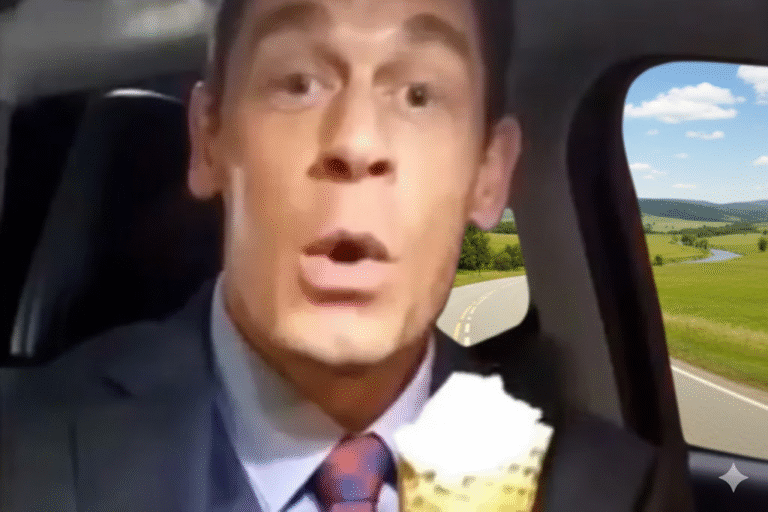
Introduction
Cartoon Characters have a unique realm in their famous way of existence, captivating audiences of all ages with their whimsical designs, appealing memories, and timeless appeal. From early animations to modern digital creations, these characters have come a long way in a long time. This article explores the information, impact, and enduring fascination of cartoon characters and delves into why they still resonate with international audiences.
The birth of cartoon characters
Cartoon characters debuted in feature films in the early 20th century. The first amazing individual, Felix the Cat, appeared in the 20s of the last century and invested a sum to create an animation.
A great time of liveliness
The 1930s to the 1950s are constantly called a great period of activity. This term saw the presence of infamous characters such as Mickey Mouse, Bugs Rabbit, and Daffy Duck, who ended up in the circle of names of relatives.
Innovative advances
Mechanical upgrades in animation strategies along with the arrival of synchronized sound and Technicolor rounded off a massive situation where animated characters appeared in a wonderful element.
Disney’s Spearheading Endeavors
Walt Disney Studios changed the brief of the industrial corporation with characters like Mickey Mouse, Donald Duck, and Silly. Disney’s emphasis on character development and storytelling set another bloody trail in motion.
Warner Brothers. Also Looney Tunes
Warner Brothers. It carried over from the Looney Tunes line and provided characters such as Bugs Rabbit, Tweety Bird, and Porky Pig. Their droll humor and clever talk made them famous.
Hanna-Barbera’s Obligations
Hanna-Barbera Creations created popular characters such as Scooby-Doo, The Flintstones, and The Jetsons. Indications of their children became a regular part of Saturday morning television for a long time.
The rise of TV children’s tips
The 1960s and 1970s saw a shift from dramatic short films to television series. This innovation introduced characters such as Tom and Jerry, the Smurfs, and Yogi Winnie into the small exhibit.
Influence of Japanese activity
The Japanese hobby or anime brought characters like Astro Kid, Mariner Moon, and Goku into the mainstream. The anime’s specific layout and narrative expanded the animated characters’ charm.
Advances in liveliness strategies
The change from hand-drawn vibrancy to computer-generated (CGI) symbolism that was taken into account gave confused and outwardly premium characters. Movies like “Toy Story” showed the usefulness of CGI.
Work of voice entertainers
Voice entertainers play a vital role in bringing great movie characters full of energy to the present. Famous voices like Mel Blanc, who voiced several Looney Tunes characters, are vital to a male or female character.
The influence of animated characters on culture
Tons of period cartoon characters reflect cultural trends and annoyances. Shows like “The Simpsons” and “South Park” use parody to observe the artistic way of life and government affairs of the United States of America.
Merchandise and Commercialization
Cartoon characters are not leisure; moreover, they are for-profit corporate agencies. Merchandise, the state of affairs depends on the parks, and media franchises generate a lot of income for the creators.
The lasting legacy of classic cartoon characters
Classic characters like Mickey Mouse and Bugs Bunny live on in a relevant way through constant rebirth and the arrival of new generations through many media systems.
The rise of adult animation
Shows like “The Simpsons,” “Family Guy” and “Rick and Morty” have confirmed that cartoons are not the most effective for children. These shows deal with problematic topics for adults with humor and insight.
The power of relatability
Cartoon characters often embody relatable dispositions and reviews, making them endearing to viewers. Characters like Charlie Brown and SpongeBob SquarePants resonate with Diplomat attendees.
The role of streaming services
Streaming offerings like Netflix and Disney have reinvigorated interest in both conventional and new great animated film characters, making it easier for viewers to earn the right to access a wide variety of energetic content.
Representation in cartoon characters
Recent years have seen a push for more numerous and inclusive examples in cartoons. Characters like Dora the Explorer and Steven Universe reflect this fashion.
Influence of Social Media
Social media systems have proven to be important for selling and discussing great active movie characters. Memes and fan art help keep these characters in the public eye.
Fan Communities and Conventions
Fan agencies and conventions rave about the effect of big active movie characters. Events like Comic-Con offer fanatics a place to come together and express their love for characters.
Educational cartoons
Educational cartoons like “Sesame Street” and “Dora the Explorer” use characters to train children’s key lifestyle skills and understanding engagingly.
The future of cartoon characters
The future of big action films looks promising with advances in era and narrative. Virtual truth and interactive media are likely to create even more immersive memories.
The role of nostalgia
Nostalgia plays a large characteristic in the enduring reputation of cool energetic movie characters. Reboots and sequels to preferred designs take advantage of the sentimental value the characters retain.
Iconic moments in cartoon history
Certain moments in cartoon lore including Mickey Mouse’s debut in “Steamboat Willie” are milestones that shaped the evolution of the energetic characters.
The global reach of cartoons
Cartoon characters have a global profit, overcoming language and cultural barriers. Characters like Pikachu and Hello Kitty are recognized around the world.
Conclusion
The appeal of great active movie characters lies in their ability to entertain, teach, and encourage. As technology and storytelling continue to intertwine, these characters will remain a beloved part of our cultural fabric.
The most frequently asked questions about cartoon characters
1. What became the best animated movie character?
The first outstanding active film individual was Felix the Cat, who appeared in silent films in the 1920s.
2. How have cool energetic movie characters stood out over the years?
Cartoon characters have progressed from clean, hand-drawn figures to elaborate, computer-generated creations. The progress of the times and animation techniques made it possible to present unique and distinctive characters.
3. Why are great active movie characters so famous?
Cartoon characters are known for their relatable personalities, appealing memories, and ability to evoke feelings. They appeal to audiences of all ages and offer a form of escapism.
4. What function do voice actors play in cartoons?
Voice actors bring great energetic movie characters to life by giving them unique voices and personalities. Iconic voices are essential to human identification and appeal.
5. How are streaming services affecting big action movies?
Streaming services have made it much less complicated for viewers to get the right to access a huge amount of active content year after year. This availability has revived the fondness for great active movie characters.
6. Are cartoons best for youth?
No, cartoons are not awesome for kids. Adult animation, which includes “The Simpsons” and “Family Guy,” deals with adult themes and appeals to both male and female audiences.
7. What influence do great living film characters have on the way of existence?
Cartoon characters often reflect societal values and issues, making them influential in shaping cultural norms and fueling debates on various topics.
8. What are several academic cartoons?
Educational cartoons like “Sesame Street” and “Dora the Explorer” use characters that teach children important life skills and understanding in engaging ways.
9. How important is diversity in cartoons?
For example, cartoon diversity and inclusivity are essential. Diverse characters help reflect reality around the world and allow larger visitors to glimpse memories.
10. What is the future of cartoon characters?
The future of cartoon characters looks promising with advances in era and narrative. Virtual truth and interactive media are likely to create even deeper research.




